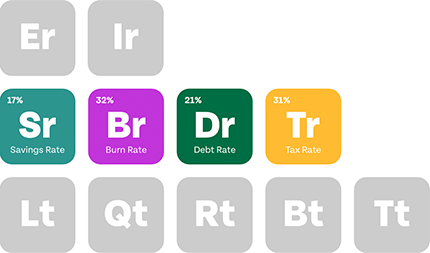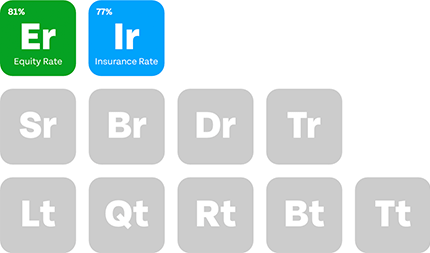Did you know there are approximately 70,000 health-related searches per minute on Google every day? That translates to 70,000 times you’ve missed an opportunity online to get more patients.
This is just the digital side of the issue. Think about your local community and how many more conversions you could make with an effective marketing strategy.
With the right blend of offline and online marketing strategies, you can drive a steady flow of patients to your practice all year round.
So, if you’re keen on effectively marketing your medical practice, keep reading to learn how to get started.
Key Takeaways
- A strong website and SEO are crucial for online patient acquisition success.
- Offline strategies like community events help build local trust and awareness.
- Combine online and offline marketing for a unified, goal-driven strategy.
- Clear goals and consistent branding are key to effective medical marketing.
Table of Contents
Marketing Strategies for Physicians
Marketing a medical practice requires a balanced approach. You need to reach potential customers through a website, social media platforms, and emails while connecting with the local community via offline marketing.
In this section, we’ll discuss online and offline marketing separately and then see how you can combine them to create a successful unified marketing strategy.
Online Marketing Strategies for Physicians
Online marketing involves promoting your medical services through digital platforms. It enhances your reach globally as more people can find you with an internet connection. It’s also an effective marketing strategy for doctors who provide telemedicine services. Below are several ways to market your medical practice online.
1. Build a Medical Practice Website
A website is often the first point of contact between businesses (including physicians) and their potential clients. So, creating a fully functional website allows potential patients to learn more about your practice before visiting your clinic.
You can also offer telemedicine services, which allow patients to contact you remotely for diagnosis and medical advice.
Related reading…How Teleneurology Is Changing Neurologist Earnings
2. Optimize Your Search Engine Ranking
It’s not enough to build a website. To appear on relevant searches, you will need search engine optimization (SEO). Here’s a quick exercise for you. Open a new tab and search for any health-related questions. The articles appearing on the first page of your search results are SEO optimized.
Most people find what they’re looking for on the first page of search results. So if you create a website and it’s not optimized to appear on that first page, you’ll lose visitors. You may need to hire a professional to provide SEO services to improve your rankings in search results.
3. Start a Blog
Include a blog on your website to share health tips with potential patients to establish yourself as an authority in your niche. Did you do the exercise we mentioned earlier? If you did, the first few search results might include resources from Cleveland Clinic, Healthline, and Medical News Today.
This is because they’ve optimized their website for SEO. By including a blog that answers commonly asked questions, they have more opportunities to use keywords that improve their search engine rankings.
So, having a blog is like killing two birds with one stone. You increase patient trust by producing relevant, well-researched content and enhancing SEO to increase visibility.
4. Adopt Social Media Marketing
Social media platforms are excellent for engaging with potential and existing patients. Use platforms like LinkedIn, Facebook, Instagram, X, and Reddit to share updates, health tips, and even behind-the-scenes looks at your medical practice.
You can also feature success stories on your social media pages. With your client’s permission, you can share how they got better by following medical advice or using your services. You can also launch a social media campaign where you call for patient engagement through their health stories. This serves as a form of user-generated content that facilitates trust.
5. Implement Email Marketing
Email marketing allows you to stay connected with your patients through newsletters. You can feature a periodic newsletter that provides subscribers with medical advice, success stories, and blog posts.
You can also email appointment reminders to patients, check up on existing and old patients, and send special offers. It ensures continued communication with your patients and keeps you as the first reference for their health needs.
6. Contribute to Medical Publications
Confirm your authority as a medical practitioner by writing medical journals and contributing to industry publications. While this may not help you get more patients, it improves your credibility and popularity among other doctors. As a result, you can get referrals from colleagues.
7. Manage Your Online Reputation
Your medical practice may succeed or fail based on your online reputation. Hence, you must pay attention to your online reviews because they tell potential clients what to expect when they visit your practice. Negative reviews drive patients away, regardless of how much marketing you do. Positive reviews, on the other hand, encourage patients to come to you.
So when you ask for patient reviews on your website, have someone on standby to apologize for any reported negatives and offer fixes or compensation. Do this for your social media accounts as well. Don’t stop there; be proactive about avoiding a second occurrence.
If the complaint is about your staff, talk to them. Improve your customer service if it is the issue. Explain and offer assistance if there is a misunderstanding. Avoid giving any patient a negative impression of your medical practice, no matter what.
8. Offer a Referral Program
Finally, start a referral program to encourage word-of-mouth marketing. Referral programs incentivize existing patients to refer their friends and family to your practice. You can offer loyalty points that can be redeemed after a while, a free check-up for X number of patients referred, or whatever works financially for your business.
Offline Marketing Strategies to Improve Local Reach
Your offline presence matters because your foot traffic will come mostly from your local community. So, let’s discuss some offline marketing strategies.
1. Engage with Your Local Community
Participate in community activities to increase brand awareness and build trust with local patients. You can volunteer at charity events, sponsor local sports teams, host a blood drive, organize health seminars and workshops, participate in cultural events, and more.
A high level of community involvement increases word-of-mouth marketing, one of the most effective forms of marketing. It helps your practice become a household name for locals, who refer you to their network or people visiting the community.
2. Utilize Print and Direct Mail Advertising
Print ads in local newspapers and direct mail campaigns are still effective for a subset of the community, particularly the older generations. These methods present memorable ways to advertise your practice and are meant for patients who may not be as active online.
3. Establish Networking and Partnerships
Building relationships with other healthcare providers and local businesses can be a powerful way to generate referrals. For example, you can partner with other businesses, like pharmacies, wellness centers, and gyms, to create a trusted network directing patients to your practice.
Establishing such collaborations is especially beneficial for busy physicians looking to expand their local reach without heavy investments in expensive advertising.
4. Leverage Traditional Media and Events
Traditional media outlets such as radio and local TV can further amplify your offline marketing efforts. Like print media, they help increase your practice’s local visibility and credibility.
If you can afford it, you can even start a “health and you” series on radio or TV, sharing health and wellness ideas with your audience. This will solidify your space as the top medical practice in the community.
Building an Effective Marketing Strategy with Online and Offline Marketing
The best marketing strategies often combine online and offline marketing efforts. While all the tactics we’ve discussed have merit, their effectiveness can vary depending on factors like your audience demographics and services.
For example, if you offer telemedicine services, you must do extensive digital marketing to reach more people nationwide and even globally.
That said, we’ll now discuss how to create a unified marketing strategy (including online and offline marketing) to reach your goals.
Define Your Goals and Conduct Market Research
Start by establishing clear marketing goals. Ask yourself:
- What do you want to achieve? (attracting new patients, enhancing your online reputation, etc.)
- Who is your target audience? This will depend largely on your scope of practice. For example, a gynecologist will target women.
- What metrics define success? Website traffic, positive reviews, patient inquiries, etc.
Then, conduct market research to understand your patient’s needs and preferences. A gynecologist, for example, can conduct market research by surveying local women to discover what services they value most.
They can also look into competitors to discover and fill gaps in their services. For example, if people complain about the unfriendly staff in a competitor’s practice, ensure you train your staff to be nice and friendly. This gives you an edge over others.
Create a Unified Marketing Plan
Once you’ve identified your goals, create a comprehensive marketing plan that integrates online and offline strategies. See some key steps to take:
-
Determine the Best Marketing Channels to Meet Your Goals: The best marketing channel or tactics for your medical practice depend on your specific goals. If your goal is to attract more local patients, focus on marketing strategies with a greater local impact, such as direct mail campaigns and community engagement. However, prioritize digital strategies if your goal is to reach a broader audience or promote telemedicine services. That said, even if your main focus is offline marketing, you still need a website and social media accounts to maintain an online presence. They will help potential patients easily find you and learn about your services.
-
Set a Clear Timeline: Plan your marketing goals according to a schedule. For example, if you want more consultations on your website, specify the target figure and time window. For example, a 5% increase in consultations in 3 months. This should strictly be based on data because you can’t control how often people need a doctor. A data analyst can provide data insights on how specific you can be with your marketing goal and the timeline to achieve it.
-
Evaluate Your Resources: Consider your budget and available time. Offline campaigns, especially TV or print ads, may require a larger investment. If your budget is limited, consider digital marketing. Digital channels also offer a better return on investment and measurable results. Digital marketing might be more manageable for busy physicians because many tasks, such as scheduling posts or sending email campaigns, can be automated.
-
Align Your Messaging: Regardless of your marketing channel, ensure consistent messaging to make your brand memorable. To achieve this, create a style guide outlining the brand’s tone and visuals. This way, even when you’re unavailable to create content, someone else can take over and maintain the brand’s voice.
Measure Your Marketing Success
Monitor key performance indicators (KPIs) regularly to assess the effectiveness of your marketing strategies. Track website traffic, social media engagement, patient reviews, and inquiries to determine what works and make necessary adjustments.
Final Thoughts
Marketing a medical practice effectively requires a well-rounded strategy that combines the strengths of online and offline methods. Usually, your marketing strategy will lean more towards digital or offline marketing, and the deciding factor is your specific goal. You can confidently choose the best marketing tactics for your desired results with a clear goal.
However, if you want expert advice on marketing your medical practice, we have a team of professionals specializing in practice management. We’ll assess the current stage of your medical practice and develop an effective plan to promote your business.
Want to know more? Contact us now.







































